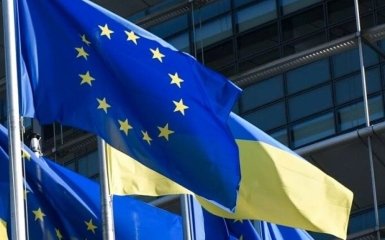The European Parliament and the Council of the EU have reached a preliminary agreement on a new mechanism for supporting Ukraine through the creation of the Ukrainian Fund in the amount of 50 billion euros in the budget of the European Union.
What is known about the new support mechanism for Ukraine
The EU is ready to support Ukraine as long as necessary. The Ukraine Facility will allow us to channel consistent and predictable support to Ukraine to help its people rebuild their country in the face of unprecedented challenges posed by Russia's war of aggression. At the same time, this support will help Ukraine to promote the reforms and modernisation efforts it needs to advance on the path to future EU membership, said Belgian Finance Minister Vincent van Peteghem.
It is noted that the Ukrainian Fund will combine EU budget support into a single instrument that will provide broad, predictable and flexible assistance to Ukraine for 2024-2027, adapted to the unprecedented challenges associated with the war.
The support mechanism in Ukraine is structured according to three components:
The Ukrainian Cabinet of Ministers is expected to develop a unique plan that will define the intentions for the country's recovery, reconstruction, and modernisation and contain plans for reforms within the framework of the EU's accession process. Financial support in the form of grants and loans to the state of Ukraine will be provided based on the implementation of this plan, subject to the necessary conditions and payment schedule.
Also, within the Ukrainian Investment Instrument framework, the European Union will provide support through budget guarantees and combine grants and loans from public and private institutions.
The third component is the assistance of the European Union in the framework of Ukraine's accession to the EU and other support measures that will help Ukraine make its legislation compatible with EU legislation and carry out structural reforms on the way to EU membership in the future.
The preliminary agreement reached between the European Parliament and the Council of the EU defines the financial aspects in the context of the creation of the Ukrainian Fund.
The fund's total budget of 50 billion euros will be distributed as follows: 33 billion in loans and 17 billion in grants.
Grants will be allocated through a new specialised instrument proposed to be created as part of the mid-term review of the EU's multi-annual budget. Loans will be given through reserves of the EU's resources, similar to the financing used to implement macro-financial assistance for Ukraine.
Ukraine can make a request, within the framework of the Ukrainian plan, for an advance payment in the amount of up to 7 percent of the Fund's capacity.
It is known that a significant share of the investment part of the Plan in Ukraine and the Framework Investment Program will be allocated to green investments.
What preceded it
On February 1, the leaders of the EU member states unanimously agreed to provide Ukraine with EUR 50 billion of financial support. 17 billion euros is direct financial aid to Ukraine; the rest are loans that Kyiv will receive over the next four years. Ukraine expects to receive the first 4.5 billion euro payment in March.
On June 20, 2023, the European Commission proposed to create the Ukraine Facility for 2024-2027 for 50 billion euros in the form of grants and loans. In October, the European Parliament amended the EU budget to finance this fund.
The aid fund for Ukraine was created by the decision of the EU leaders' summit in December 2023. Still, they could not approve the allocation of 50 billion euros because Hungary blocked the decision.
More on the topic
- Category
- Politics
- Publication date
- Додати до обраного


